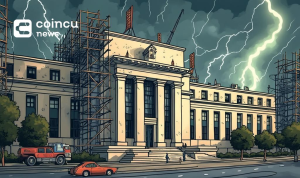A flash crash refers to a sudden and significant decline in the price of an asset within a short timeframe, followed by a rapid recovery to previous levels. While flash crashes can occur in various markets, they are particularly prevalent in the cryptocurrency industry due to its high volatility and the presence of high-frequency trading.
Flash crashes have become a notable phenomenon in the crypto market, often occurring within hours or even minutes. This occurrence is primarily driven by the intense selling pressure and rapid shifts in prices associated with digital currencies.
However, it is essential to note that flash crashes are not exclusive to the world of cryptocurrencies. They can also happen in traditional financial markets such as stocks and foreign exchange. Some notable examples of flash crashes in the stock market include the July 2015 flash crash, where the New York Stock Exchange experienced a trading halt for over three hours, and the 2014 bond flash crash, caused by algorithmic trading programs.
In the crypto landscape, flash crashes have their unique triggers. For instance, in 2021, Bitcoin witnessed a flash crash that resulted in the wiping out of approximately $310 billion from the digital currency market, leading to $10 billion worth of BTC liquidations.
This specific flash crash was triggered by a power blackout in the Xinjiang region of China, which houses some of the world’s largest Bitcoin mining farms. Due to the blackout, a significant portion of Bitcoin’s network went offline, resulting in a drop in mining activity from 215 to 120 exahash per second. This sudden decline in mining power caused a massive sell-off, ultimately leading to the flash crash.
The concept of flash crashes can be better understood by examining the role of high-frequency trading (HFT). HFT is a trading strategy that involves the use of powerful computers and algorithms to execute a large number of trades within microseconds. This rapid trading activity can exacerbate price movements and magnify market volatility.
In the context of flash crashes, HFT can play a significant role by amplifying the impact of sudden selling or buying pressure. When a large sell order is executed in the market, HFT algorithms may detect this activity and respond by rapidly selling their positions, contributing to the downward price movement. Similarly, in the case of a sudden buy order, HFT algorithms may respond by buying assets at higher prices, fueling an upward price movement.
Moreover, HFT algorithms are designed to react to market conditions and make decisions based on predefined rules and patterns. However, in times of extreme volatility or unusual events, these algorithms may not function as intended, leading to unintended consequences such as flash crashes.
Flash crashes pose significant challenges to traders and investors, as they can result in substantial financial losses within a short span of time. To mitigate the risks associated with flash crashes, it is crucial to employ risk management strategies, including setting stop-loss orders and diversifying one’s portfolio.
Regulators and exchanges also play a vital role in addressing the issue of flash crashes. They can implement circuit breakers, which temporarily halt trading activities in response to rapid price movements, allowing market participants to reassess their positions and prevent further panic selling or buying.
Overall, flash crashes are a unique characteristic of the cryptocurrency market, driven by factors such as high-frequency trading and market volatility. Understanding the causes and potential impact of flash crashes is essential for anyone involved in the crypto space, whether as a trader, investor, or regulator.















